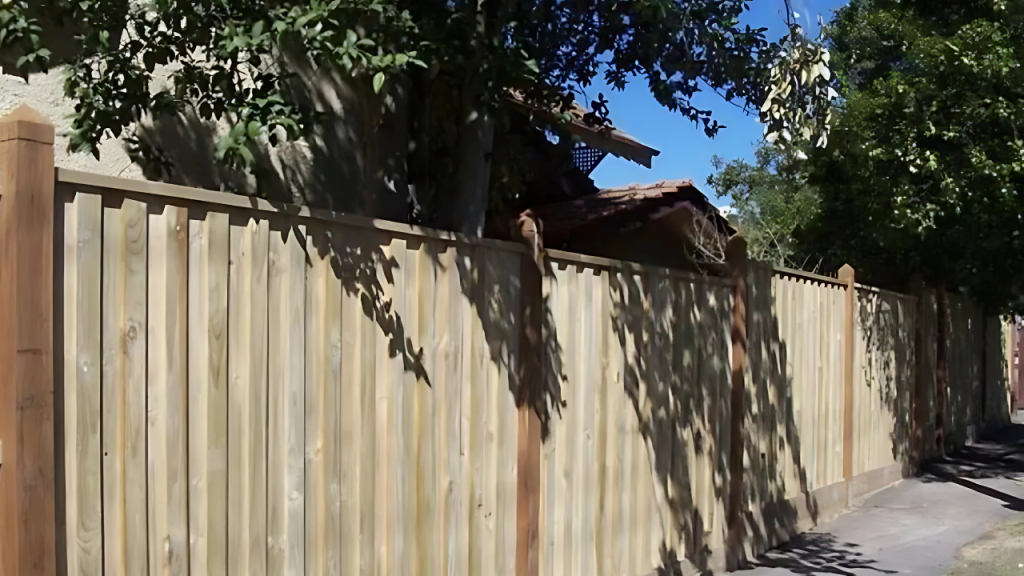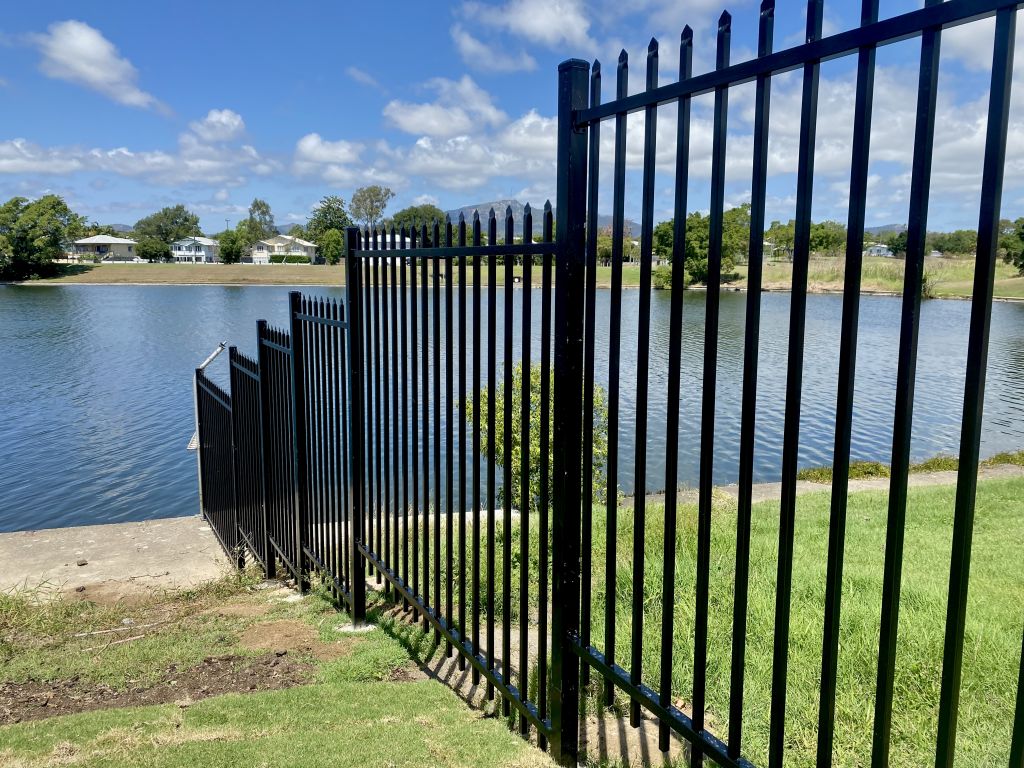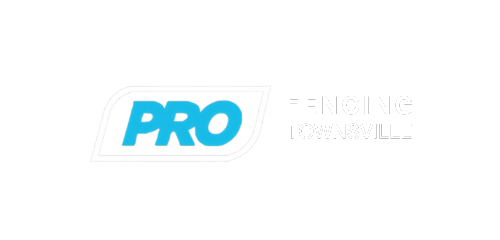
When it comes to fencing, even minor errors can lead to significant consequences. As an experienced fencing contractor in Townsville, I’ve seen it all. Here are four critical fencing mistakes that can cost you time, money, and effort.
Table of Contents
- Ignoring Property Boundaries
- Selecting Inappropriate Materials
- Inaccurate Measurements
- Poor Installation Practices
- Why Choose Us to Avoid Costly Fencing Mistakes

1. Ignoring Property Boundaries
Understanding your property boundaries is essential before starting any fencing project. Overstepping these lines can lead to fencing mistakes, resulting in disputes with neighbours and costly legal repercussions. Taking the time to verify your boundaries and communicate with the necessary parties can save you time, money, and potential conflict in the long run.
Consult Property Documents
One of the most common fencing mistakes is failing to review official property documents such as your property deed or land survey. These documents outline the exact dimensions and legal boundaries of your land. If you do not have a copy, you can request one from the local land registry or relevant authority. In some cases, older properties may have outdated records, so it may be necessary to obtain an updated survey from a licensed land surveyor to ensure accuracy.
Engage Local Authorities
Before commencing your fencing project, it is important to check with the Townsville City Council regarding any specific regulations, permits, or restrictions that may apply. A frequent fencing mistake is overlooking local council guidelines on fence height, materials, and placement, particularly for properties adjacent to roads or public spaces. Certain areas may also have heritage or environmental restrictions that impact the type of fencing allowed. Failing to comply with council regulations could result in fines or being required to alter or remove the fence at your own expense.
Discuss with Neighbours
Open and respectful communication with your neighbours can prevent potential disputes and ensure a smooth fencing process. A common fencing mistake is failing to inform neighbours about your plans, which can lead to misunderstandings and conflicts. In Queensland, the Neighbourhood Disputes (Dividing Fences and Trees) Act 2011 outlines the shared responsibility for boundary fences, including cost sharing arrangements. Discussing the project with your neighbour can help clarify responsibilities and expectations, reducing the likelihood of disagreements.
Use Boundary Markers
To ensure accurate placement of your fence, physically marking the property lines is a crucial step. One of the major fencing mistakes is neglecting to use stakes, string lines, or flags to clearly outline the boundaries before construction begins. If there is any uncertainty about the exact boundary location, consider hiring a professional surveyor to mark the correct lines. This precaution helps prevent encroachment on neighbouring properties and ensures compliance with legal property limits.
By carefully following these steps and avoiding common fencing mistakes, you can prevent legal complications, maintain good relationships with your neighbours, and ensure your fencing project is completed correctly and in accordance with local regulations.
2. Selecting Inappropriate Materials
Choosing the right materials for your fencing needs is crucial. Each material has its own advantages and disadvantages, and selecting the wrong one can lead to fencing mistakes, unnecessary expenses, ongoing maintenance, and potential durability issues. Understanding the benefits and limitations of each fencing material can help ensure you make an informed decision that suits your requirements, budget, and climate conditions.
Timber Fencing
Timber fencing is a popular choice for those seeking a natural and classic look. It is ideal for providing privacy and enhancing the aesthetics of a property. However, fencing mistakes such as neglecting regular maintenance, including staining, sealing, or painting, can lead to weather exposure, rot, and termite damage. Different types of timber, such as treated pine or hardwood, offer varying levels of durability, with hardwood being more resistant to pests and decay.
Aluminium Fencing
Aluminium fencing is known for its durability, rust resistance, and minimal maintenance requirements. It is an excellent choice for modern designs and is commonly used around pool areas due to its compliance with safety regulations. However, fencing mistakes like improper installation or choosing a low quality aluminium product can compromise its strength and longevity. Aluminium fences are lightweight yet strong, making them easy to install and long lasting. They are also available in a variety of styles and colours, providing both security and aesthetic appeal.
Colorbond Fencing
Colorbond fencing combines strength and style, making it a popular option, especially in regions with extreme weather conditions such as Townsville. Made from high quality steel, Colorbond fences are resistant to corrosion, fading, and warping. One common fencing mistake is failing to consider expansion gaps, which can lead to warping over time. They provide excellent privacy and security while requiring little maintenance. Additionally, they come in a range of colours to complement different property designs, making them a versatile and stylish choice.
Vinyl or PVC Fencing
Vinyl or PVC fencing is a long lasting and low maintenance alternative to traditional materials. It does not rot, rust, or require repainting, making it a hassle free option for homeowners. However, a common fencing mistake is underestimating the impact of extreme temperatures, which can cause vinyl to become brittle over time. While the initial cost of installation can be higher compared to other materials, the long term savings on maintenance and repairs often justify the investment. Vinyl fencing is available in various designs, including privacy, picket, and ranch style options, providing both functionality and visual appeal.
Match the Material to Purpose
Selecting the right fencing material depends on its intended purpose. For instance, aluminium fencing is a great choice for pool areas due to its durability, rust resistance, and compliance with safety standards. Timber fencing is ideal for backyard privacy, creating a warm and natural look while providing a sound barrier. Colorbond fencing is suitable for homes in harsh climates, offering resilience against strong winds, heat, and heavy rainfall. Avoiding fencing mistakes, such as selecting a material that does not suit your climate or maintenance capacity, will help in choosing the most suitable material for long term durability and effectiveness.
3. Inaccurate Measurements
Accurate measurements are essential when constructing a fence. Fencing mistakes, such as incorrect measurements, can lead to wasted materials, increased expenses, and a fence that does not fit or function properly. Whether building a boundary fence, a decorative garden fence, or a pool fence, precise measurements ensure a professional and secure installation.
Measure Twice, Cut Once
One of the most important principles in fencing is double checking all measurements before making any purchases or cuts. Fencing mistakes, such as a small miscalculation, can lead to material wastage, additional costs, and delays in the project. Always verify measurements at least twice to prevent costly mistakes.
Account for Slopes
If your property has uneven terrain, it is important to adjust your measurements accordingly to maintain a consistent and level appearance. Fencing mistakes in sloped areas can result in gaps underneath the fence or an unsteady structure. For sloped areas, consider methods such as stepping or raking the fence panels to ensure both aesthetic appeal and structural integrity. Proper planning in this area prevents gaps underneath the fence and ensures compliance with local regulations.
Follow Local Regulations
Different regions have specific fencing regulations that must be followed. Fencing mistakes, such as failing to adhere to local regulations, can lead to penalties or the need to modify the fence after installation. For example, in Townsville, standard pool fencing regulations require a minimum height of 1.2 metres to ensure safety and compliance with legal requirements. It is essential to check with local authorities or councils to ensure your fence meets all necessary guidelines.
Use Proper Tools
To achieve precise measurements, it is crucial to use reliable tools such as a high quality tape measure, a spirit level, and a laser distance measurer. Avoiding fencing mistakes involves ensuring accuracy in both vertical and horizontal measurements, reducing errors and the need for adjustments during installation.
Create a Detailed Plan
Before beginning construction, it is beneficial to sketch out the entire fence layout. Fencing mistakes, such as failing to create a detailed plan, can result in misaligned posts or an inefficient use of materials. This plan should include precise dimensions, gate locations, and any special features such as decorative elements or additional support posts. A well documented plan serves as a guide during installation and helps prevent errors that could lead to unnecessary costs or delays.
By following these steps and avoiding fencing mistakes, you can ensure that your fencing project is successful, cost effective, and compliant with all relevant standards.
4. Poor Installation Practices
Even the highest quality materials will fail if the installation is not done correctly. Proper installation ensures the durability and stability of your fence, helping it withstand environmental factors such as wind, rain, and soil movement over time. Careful planning and attention to detail during installation will prevent common fencing mistakes like leaning, warping, or premature deterioration.
Secure Fence Posts:
The strength and stability of your fence rely heavily on properly installed posts. Each post should be buried at least 600mm deep and set in concrete to provide a solid foundation. This depth helps resist movement caused by strong winds, storms, and shifting soil conditions. One of the most common fencing mistakes is failing to set posts deep enough, leading to instability over time. In areas with loose or sandy soil, posts may need to be buried deeper for added stability. Using the right type of concrete mix and allowing it to fully cure before attaching panels or rails will enhance the fence’s durability.
Check Alignment:
A straight and level fence not only improves the overall aesthetic but also ensures even weight distribution and structural integrity. Use a string line or laser level to guide post placement and check for accuracy throughout the installation process. Misaligned posts are a frequent fencing mistake that can lead to gaps, uneven panels, and a weakened fence structure over time. Taking the time to double check measurements and adjustments before securing each section will help avoid costly errors.
Account for Drainage:
Water accumulation around fence posts can cause rot, corrosion, or instability, particularly for timber and metal fences. One of the major fencing mistakes is neglecting drainage considerations, which can significantly shorten a fence’s lifespan. Choose locations that allow proper drainage and avoid installing the fence in low lying areas where water tends to pool. If fencing in such an area is unavoidable, consider using drainage solutions like gravel, sloped ground, or perforated pipes to redirect excess moisture. Using rot resistant or treated materials will also help prolong the life of the fence in damp conditions.
Follow Manufacturer Instructions:
Each fencing material comes with specific installation requirements to ensure optimal performance and longevity. Whether you are working with timber, metal, PVC, or composite fencing, carefully follow the manufacturer’s guidelines for post spacing, fixing methods, and recommended treatments. Ignoring these instructions is a common fencing mistake that may lead to structural weaknesses, voided warranties, or a fence that does not perform as expected over time.
Hire Professionals:
If you are unsure about any aspect of the installation process, it is worth investing in professional assistance. Experienced fencing contractors have the knowledge and tools to ensure a precise and secure installation, reducing the risk of costly fencing mistakes or future repairs. They can also provide guidance on material selection, compliance with local regulations, and additional features such as gates or decorative elements. Engaging professionals will give you peace of mind that your fence is built to last and withstands the elements.

5. Why Choose Us to Avoid Costly Fencing Mistakes
Building a fence can be complex, but our team is here to make it simple and stress free. Here’s why you should choose us:
Local Expertise:
With years of experience in Townsville, we understand the unique challenges posed by the local climate and soil conditions.Quality Materials:
We source only premium materials to ensure your fence is durable and visually appealing.Accurate Measurements:
Our meticulous approach guarantees a perfect fit every time, minimising waste and cost.Professional Installation:
Our skilled team ensures that your fence is installed securely and to the highest standard.Customer Satisfaction:
We prioritise your needs and are committed to delivering a fence you’ll love for years to come.
For more details or to request a free quote, contact us today. Let us help you avoid these common fencing mistakes and ensure your project’s success.
FAQs
Before starting a fencing project, it’s essential to check your property boundaries to avoid disputes with neighbours or any fencing mistakes. Make sure to consult local council regulations and obtain any necessary permits. Additionally, plan the design and materials to suit your needs and budget while considering the local climate and aesthetics.
For Townsville’s tropical climate, materials like treated timber, powder-coated aluminium, or Colorbond steel are excellent options. These materials are resistant to humidity, heat, and termites, ensuring durability and longevity. Always opt for high quality, weather resistant materials to withstand the local conditions to avoid costly fencing mistakes.
Fence posts in Townsville should be set at least 600mm to 900mm deep, depending on the fence’s height and soil type. Deeper posts provide greater stability, especially during storms or in sandy soils. Using concrete to secure the posts ensures they stay firm and upright over time.
To ensure accurate measurements, use a quality measuring tape and double check your dimensions at every stage. Mark out the fence line with stakes and string, and measure diagonally to confirm the alignment is square. Taking your time during this step prevents costly errors.
Common signs of poor installation include leaning or unstable posts, uneven panels, and gaps between the fence and the ground. You might also notice sagging gates or mismatched materials. Proper planning, quality materials, and skilled installation help avoid these issues.
Timber fencing in Townsville should be maintained annually to protect it from the harsh climate. Apply a weatherproof sealant or stain to prevent water damage and fading. Regularly inspect for signs of rot, termites, or damage and address any issues promptly.
While it’s possible to install a fence yourself, hiring a professional ensures a higher quality finish and compliance with local regulations. Professionals have the tools and experience to handle challenges like uneven terrain or tricky installations. It’s a great option if you want peace of mind and a durable result!

